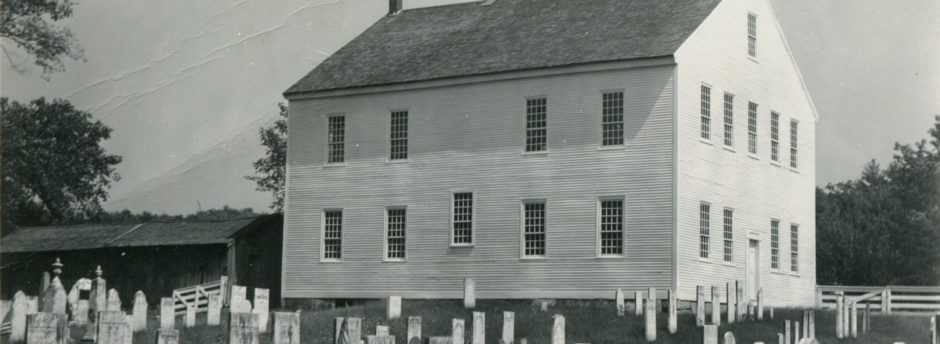A Sacred Legacy from the Past
[published in the Concord Monitor, October 1, 2016]
Most of us are so caught up in the details of living that we often fail to look beyond our daily routines. If we live in the place where we grew up, we absorbed our cultural heritage without thinking much about it, but that heritage has a way of fading unless nourished, at least occasionally.
In the late 1700s, everything was hard…people cleared forests, pulled stumps, constructed stone walls, plowed fields, raised crops and livestock for food and wool, preserved food for winter, made their clothing, built their houses, schools, and meeting houses from hand-hewn timbers – their details were much different from ours.
Come Sunday, the family piled into an open carriage or wagon and went to church services in the town’s only meeting house. We can imagine that on a warm, early summer day that this was quite the adventure. But try to imagine what it must have been like traveling on unpaved roads in the rain, in the snow, in mud season. A journey of five miles today is trivial, but back then, it could be a real hardship.
Hence, in 1791, the town of Boscawen voted to build an additional meeting house for the residents of western Boscawen. The Westerly Meeting House was identical to its sister in the eastern part of town, but positioned on the banks of the Blackwater River in what is now Webster. As the largest building in any community, the meeting house was used not only for Town Hall Meetings and religious services, but also for recreational gatherings of the residents.
Though the eastern meeting house later burned, the Westerly Meeting House still exists today. It is one of a small group of eighteenth century meeting houses in northern New England that essentially retain their original form. Despite some alterations, the building remains the only well-preserved example of its type in the upper Merrimack Valley of New Hampshire. Built by local craftsmen according to a regional architectural tradition, the building was altered in 1844 in keeping with new local traditions.
In 1902, the Old Home Day committee charged the town with caring for this structure, already more than 100 years old. The plaque over the front door reads “The First Meeting House in West Boscawen, now Webster. Erected, A.D. 1791. A sacred legacy from the past. Guard it well. Old Home Day, A.D. 1902.”
After the horrendous floods in 1936 took out 6 of the 7 bridges in Webster and flooded towns throughout the Merrimack River basin, the Army Corps of Engineers chose sites suitable for flood control dams. One such site was in Webster, in an area known as Burbank’s Mills on the Blackwater River. The meeting house was one of at least 15 buildings that had to be moved or destroyed. The town was paid $10,000 for the building but declined to move it.
Thus, in October, 1941, The Society for the Preservation of the Old Meeting House was formed to save the structure. It paid the government $105 and took possession. The incorporators and trustees with names that are still familiar to many in the area came not only from Webster, but also from New London, Peterborough, Lebanon, and Concord. The meeting house was moved from its original location where it had stood for 150 years “up to the hill” to its current position on Battle Street (Route 127).
Many times the residents of Webster and surrounding towns have come together to preserve this historic building. In 1960, the Society became a 501(c) non-profit organization. In 1972, the society built a reproduction horse shed behind the meeting house, quite similar to the one in the original location. In 1981, the society again came to the rescue by adding modern footings for the granite foundation. In 1985, the structure was listed on the National Register of Historic Places.
During the ensuing years, the structure has been painted and re-shingled, has had the front doors replaced, and had a ramp added for unrestricted access. Because of its age, the meeting house is in constant need of attention and now needs substantial maintenance.
More commonly called Old Webster Meeting House, it currently serves as a museum, a community gathering place, and an educational venue for school children.
We invite everyone to join the Webster Historical Society and lend a hand! You need not be a Webster resident to join. The membership dues are minimal but participation shows an active interest in the area’s history. For more information, see our website: websterhistoricalsociety.org
It’s time to come together again to preserve this “Sacred Legacy From the Past.” Without a doubt this structure is worth saving for future generations!
Dorothy Bourque
Webster Historical Society
